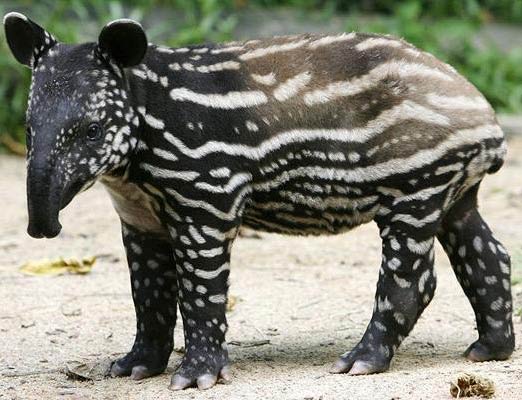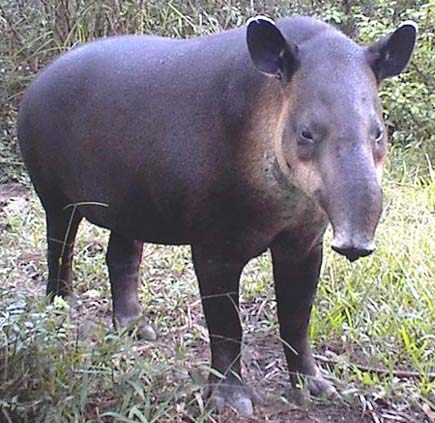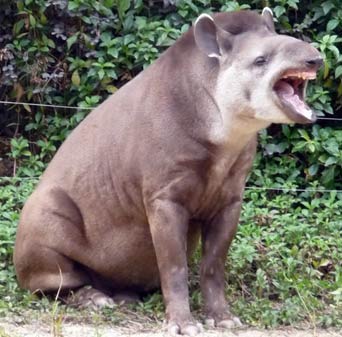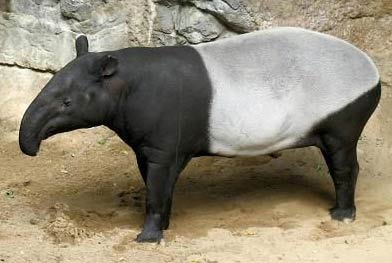Tapir – Big-Snouted Grassland Beast

Baby Brazilian Tapir
Tapirs are large mammals that resemble pigs in their build. On average, they are 7 ft (2.1 m) long and 3 ft (.91 m) high at the shoulder. Tapirs weigh between 150 and 700 lbs (68 – 316 kg). Their most recognizable feature, is the long flexible snout they have. There are four surviving species of tapir: the Malayan Tapir, the Brazilian Tapir, the Mountain Tapir and Baird’s Tapir.
All tapirs have oval ears, with black tips. Their hair is short and the color ranges from reddish-brown, to gray and black. Newborns have speckled and striped coats which eventually change as they grow into adults. The Malayan species has a light colored patch on its back, shaped like a saddle.
All species are rare and endangered. Out of the four species, the Brazilian is the smallest; it also has the shortest snout. In 1969, at San Francisco Zoo, a hybrid between the Brazilian Tapir and Baird’s Tapir was bred.

Females can breed every two years and gestation lasts 13 months. They have a single youngster, which accounts for why they have a single pair of breasts. The animal’s bulk and size protect it from predators, as well as the thick skin around the neck. They have been known to attack humans in defense of their young, or when threatened.
A Multi-Purpose Snout
The long snout, or proboscis, is used for foraging and grasping food that would otherwise be too high up and out of reach for the tapir. The proboscis is prehensile, meaning it can hold objects and it is very flexible, with the ability to swivel in any direction.

Yawning
The tapir’s closest relatives are the horse and the rhinoceros. As the it’s proboscis evolved, it affected the skull shape, making it very different to those of its relatives. This is due to the snout being made up completely of soft tissue, without any bone structure.
In order to use its sense of smell better, the tapir lifts its snout and pulls back its lips, exposing its teeth. They’re not just making funny faces, this is called the frehmen response, and can be observed among bulls and goats too.
Why Tapirs Like Water
Tapirs do live in grasslands, away from water, but those that live with ready access to a river, make good use of it. They can run surprisingly fast, despite their bulk and short legs. They will often head for a nearby river to escape predators.

Malayan species
Tapirs use riverbeds for foraging for food. They have also been known to allow small fish to feed off parasites living on their skin, while they wallow in water. Besides resting and feeding in rivers, they will often take mud baths. This prevents insects from living on their skin.
